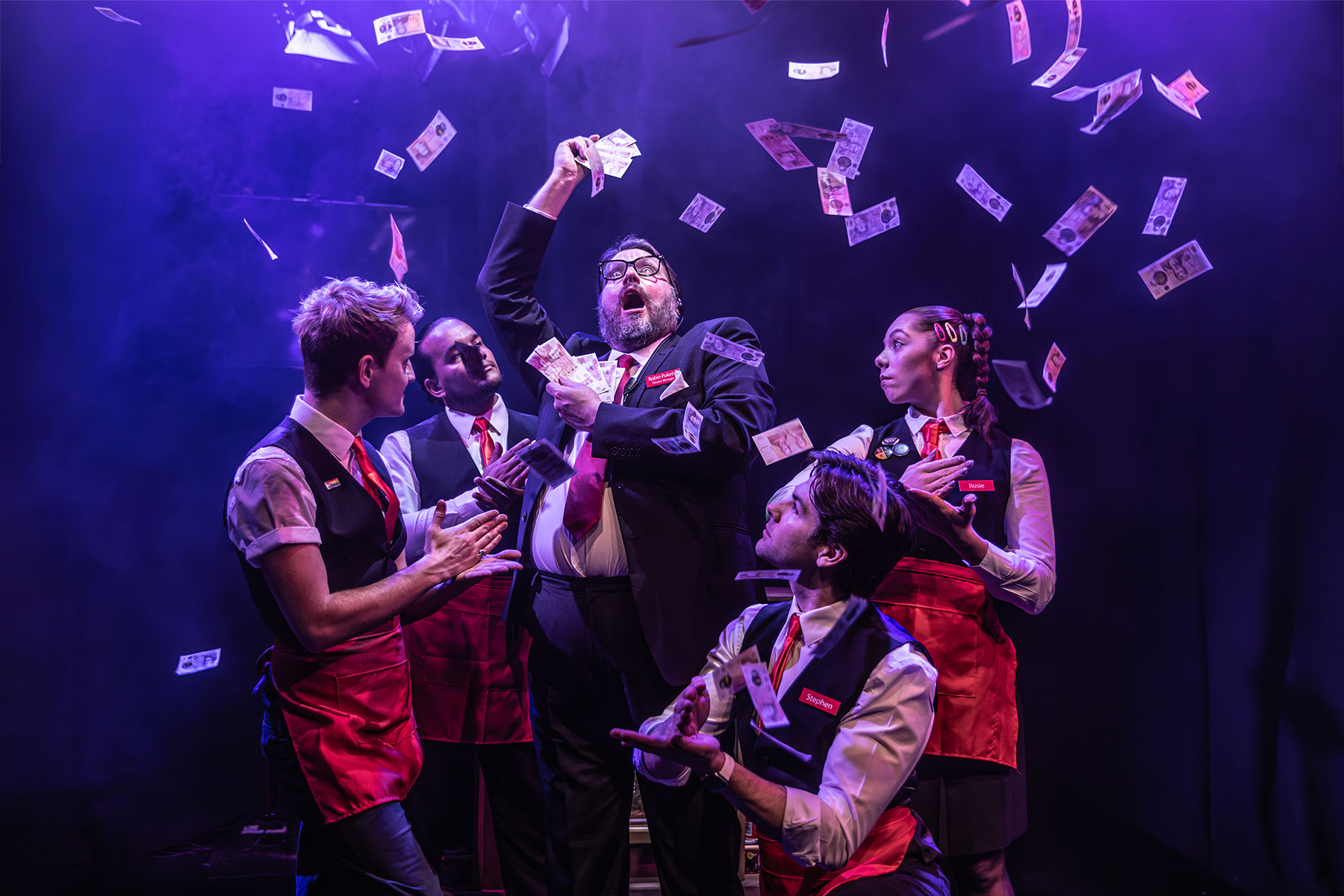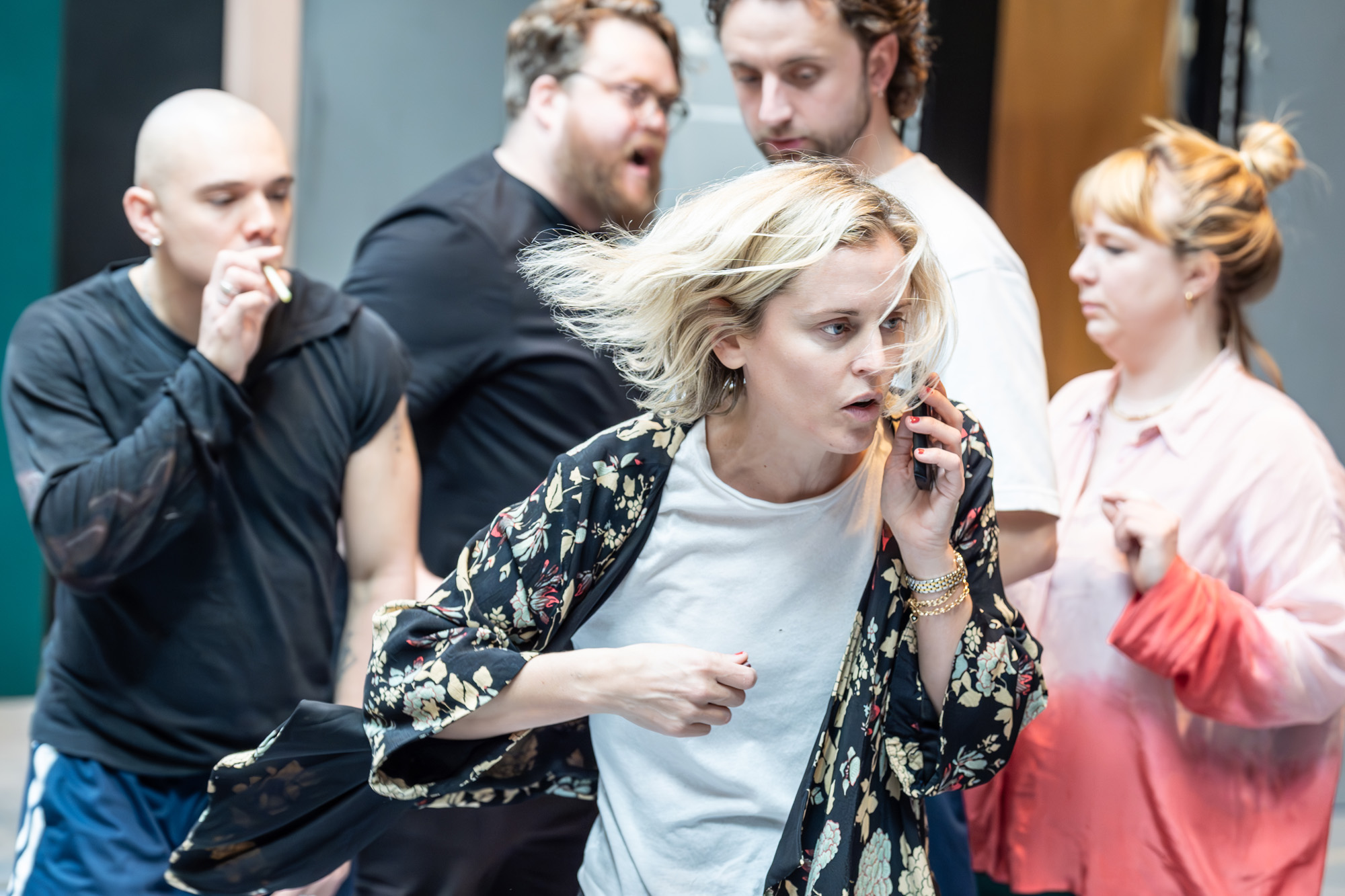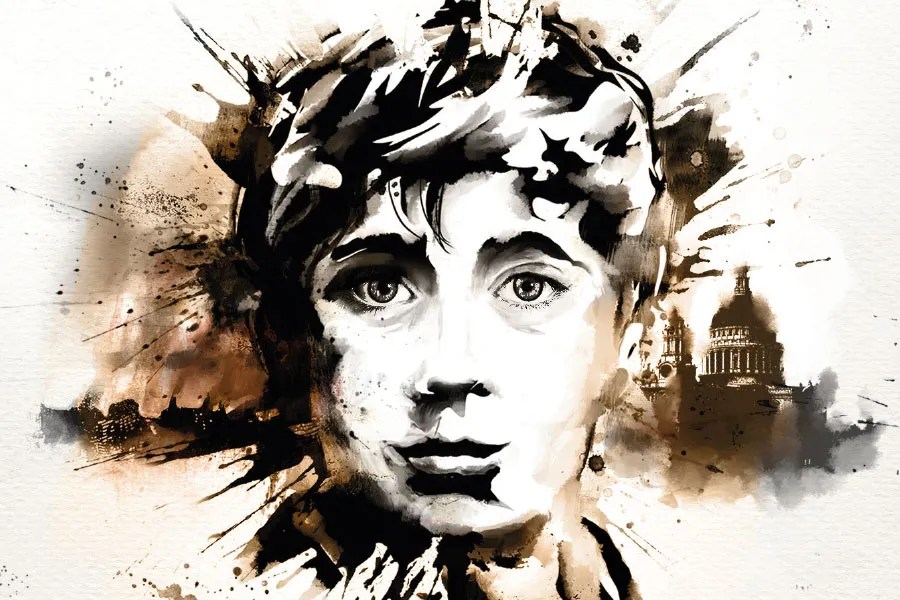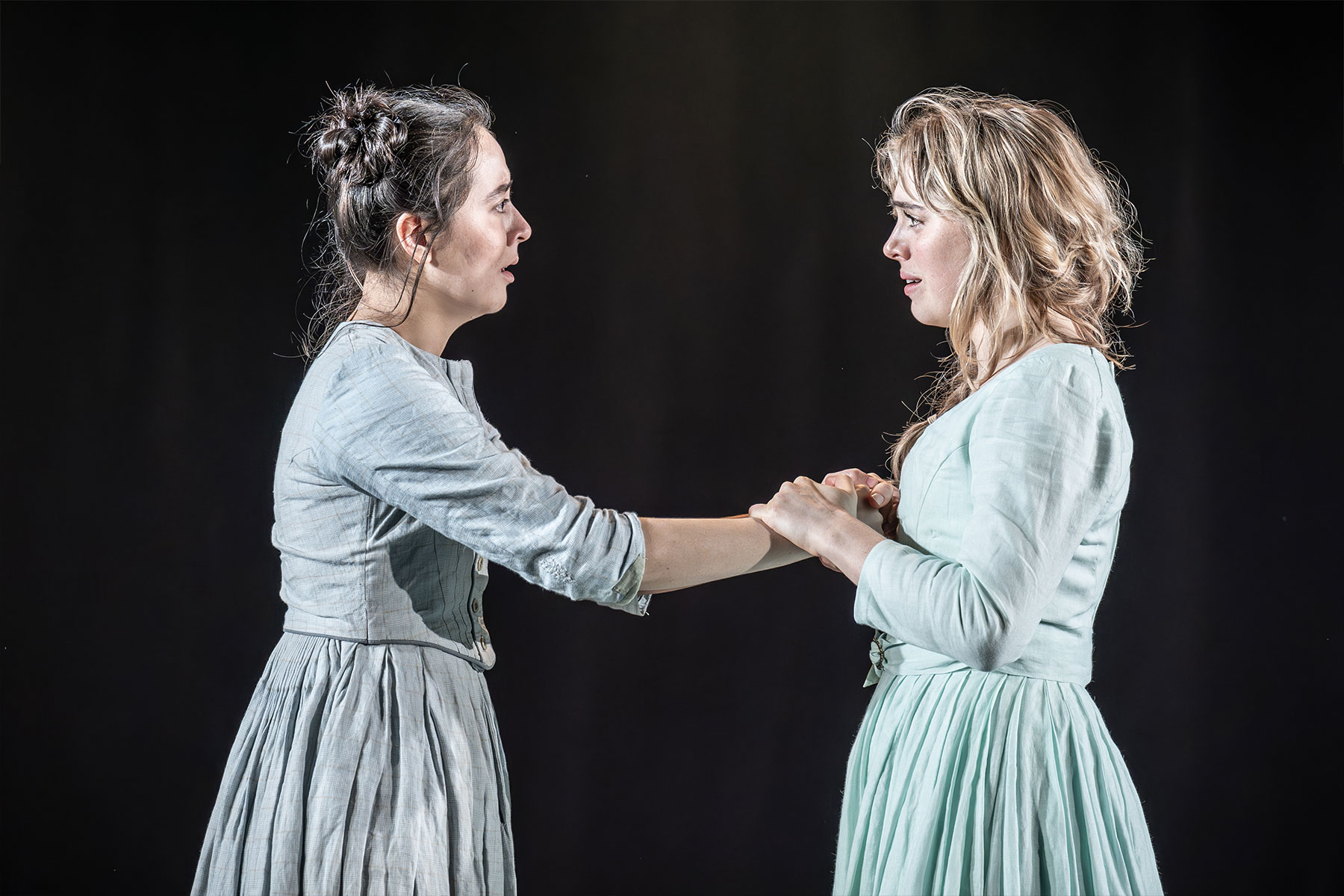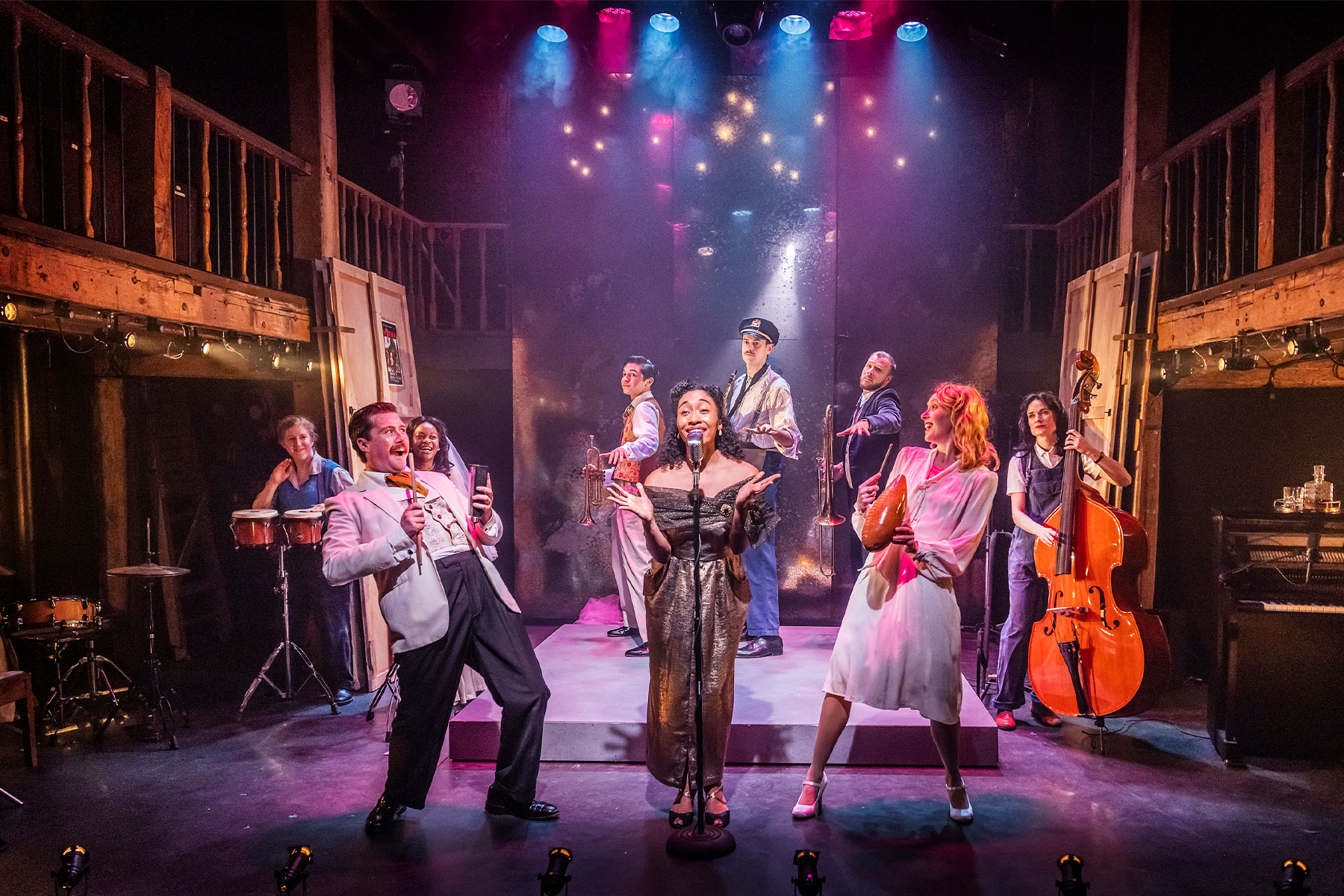Dracula (West Yorkshire Playhouse, Leeds)
Contrasts abound in this revival of Dracula by Northern Ballet Theatre: light and dark, human and inhuman, virginal innocence and erotic experience; in a tale about the life and love of a central, vampirical figure this is unsurprising. However, the subtleties of the piece (and its profound success) lies in its skilful portrayal of all that is to be found between the extremes.
Count Dracula is visited by a young English lawyer, Jonathan Harker (Tobias Batley), who is engaged to a Mina Murray (Martha Leebolt), an innocent, dreaming young woman who dances delicately across the stage whenever she strays into Jonathan’s thoughts. Mina’s attractive best friend Lucy Westenra (Georgina May) falls under Dracula’s seductive spell when he comes across her sleepwalking in a silky, siren-red dress through a whirling smoke-filled graveyard in one of the most compelling scenes of NBT’s ballet. However, it is truly Mina that captures Dracula’s attention, and the drama that follows slowly circles in upon their growing love for each other. The final, climactic ending, when Jonathan and a group of men that includes Van Helsing, Lucy’s grieving fiancé Arthur Holmwood (Hironao Takahashi), and the Head of a Lunatic Asylum, Dr John Seward, set out on a hunt to end Dracula’s life and reclaim Mina, is unfalteringly gripping.
Characterisation is at its zenith here: artistic director David Nixon’s choreography artfully elucidates the shades of grey to be found between black and white, helped by a meticulous lighting design that throws shafts of light and pools of dark into the farthest nether regions of the performance space.
Christopher Hinton-Lewis’s Count Dracula is elegant and surefooted, slipping across the stage under the protection of a magnificent velvety black cloak that shudders gently with sly movement. Moments of Dracula’s transformation from human form to winged creature are creeping and animalistic, with Hinton-Lewis’s bent arms under the cloak creating the illusion of a bat’s folded wings.
Dracula’s character itself is intelligently developed: a powerful, strident figure when amongst his sinuous vampire women, the Brides of Dracula – played with lascivious sexual abandon by Rachael Gillespie, Hannah Bateman, and Victoria Sibson – and dominant in his scenes with Lucy, whom he seduces, and eventually kills, Dracula’s dances with Mina display a different strain of emotion. Instead of throwing Mina around, as he does Lucy, he becomes more of a supplicant to her, and humbles himself on his knees, subtly tailoring his steps to Mina’s movement in a dance of their consummation. Sex plays second string to their love, represented by the movement of the bed to stage left, whilst in Dracula’s dance with Lucy it is fully centre stage.
Commendations are due for an exceptionally twisted performance by Sebastien Loe as Renfield, an insane patient of Dr Seward, whose emaciated body twists and snatches at flies, as he peers out from behind the bars of a cage suspended above the stage. The squeaking of bats that accompanies his descent from the heavens is enough to put anyone on edge for the rest of the scene.
Lack of an orchestra does nothing to diminish the production’s vitality, with the pre-recorded soundtrack fully emphasising tension-filled moments. Drawn from a strong host of musical sources: predominantly Alfred Schnittke, well supplemented by Arvo Part, Rachmaninov and Michael Daugherty, the audience are overwhelmed with the contrast of menacing strings fading into jarring, tinkling harpsichord, and the darkest of piano chords; although seasoned ballet-goers might find it a little disconcerting to be so close to the action (especially if you’re in the front row). The thrust stage works particularly well with the strong narrative thread of action, and the extra stage space is utilised to perfection, lending the ballroom scenes a tragically grand air of ill-fated wealth.
With Dracula, Northern Ballet Theatre once again prove, to an eager audience, their versatility and verve with complete and utter assurance.
– Vicky Ellis




